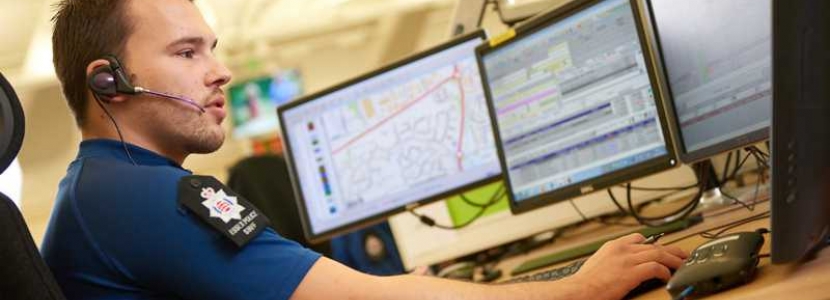
At a Town Council meeting in December, Chief Inspector Craig Carrington agreed - in response to Cllr Sandra Eden - to arrange for Councillors to visit the Force Information Room at Essex Police HQ in Chelmsford.
The aim was to observe the operation of both 999 and 101 call response and the despatching of police officers to emergencies, incidents and situations. The visit took place on January 18 and the councillors attending were Keith and Sandra Eden and Doug Perry. This is their report.
Chief Inspector Leigh Norris provided a thorough 50 minute overview of both recent changes at the FIR and current standards of performance. He highlighted changes in practice adopted since the summer of 2016 and improvements in response time of operators to both 101 and 999 call response times. He further highlighted Operator training to “add crispness” to call handling for more effective and shorter call times to improve efficiencies.
Coincidentally storm conditions had prevailed over night which had almost doubled the number of incoming calls to the centre and amply illustrated to us the impact of weather on the system.
The issue of the role of 101 calls and its introduction 6-7 years ago was discussed and we were surprised that its introduction in Essex had not been supported by either television advertising or a special social media campaign.
CI Norris responded very professionally to a range of questions and left us with clarity and confidence. He told us that Essex currently ranks 10th out of the 42 forces in the UK for the volume of 101 calls received.
We had the opportunity to spend over 90 minutes in the Information Room listening real time to incoming calls. The operators were taking both 101 and 999 calls and being aware of the type of call to which they had to respond. It quickly became apparent that only 20% of 999 calls could be considered an emergency and only 40% of 101 calls were a police matter.
The range of calls demonstrated either the public’s misunderstanding of the purpose of the two call numbers or their inability to receive advice from other areas of public service providers (or both!).
We noted that while dated in appearance the support system worked well and allowed the operators to identify locations and simultaneously record information.
They were equipped with diagrammatic maps of trunk roads and major junctions to identify locations accurately.
The opportunity was also provided to listen to Despatch calls and observe the resources available to operators and how priorities were allocated. The rural nature of much of Essex results in real challenges to provide both the speed and specialism of officer visits.
Clearly the data held and shared with other services aids the identification of the precise nature of the service provided.
Following our visit our recommendations were that the Town Council and the District Council work with Chief Inspector Carrington and the FIR to develop a media campaign to better inform the Uttlesford public the purpose of 999 and 101 calls and what to expect of them.
This could be done at modest expense through Council publications such as Uttlesford Life and on local authority web sites that would be more frequently used by the public than Essex Police publications.
We suggested that specifically the public should be encouraged to recognise inappropriate and thoughtless use of these services runs a risk of harm to those really in need and that the PCF Commissioner Roger Hirst consider a Force wide plan in conjunction with County and/or local authorities.
Published in the Walden Local: 21/02/2018
